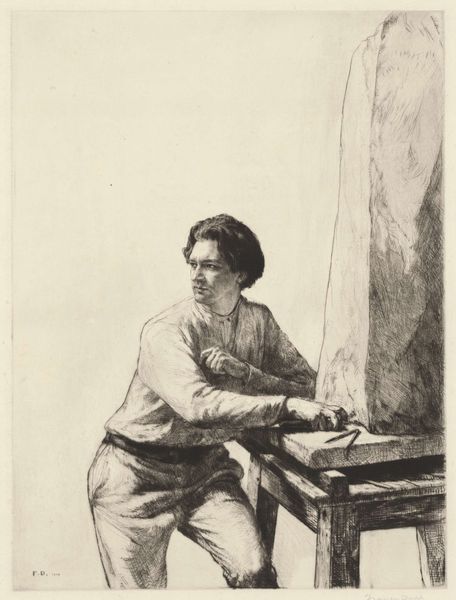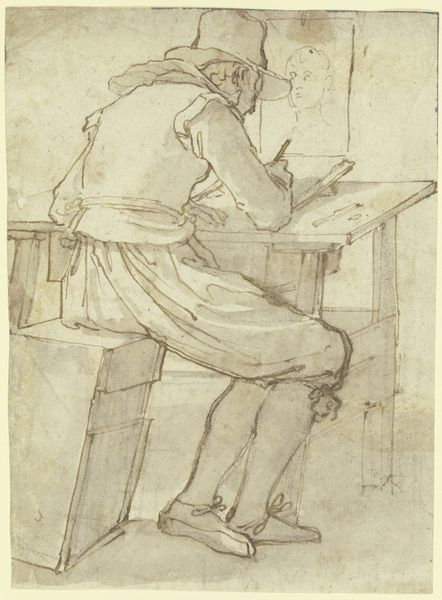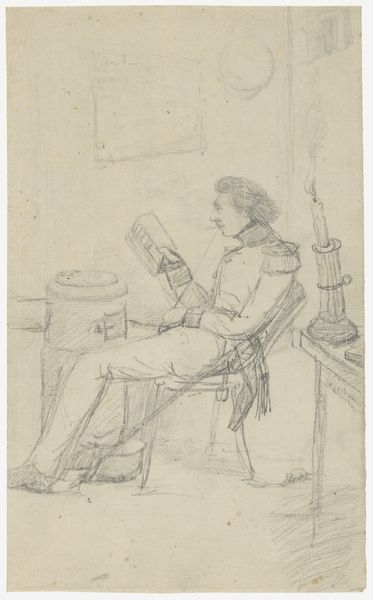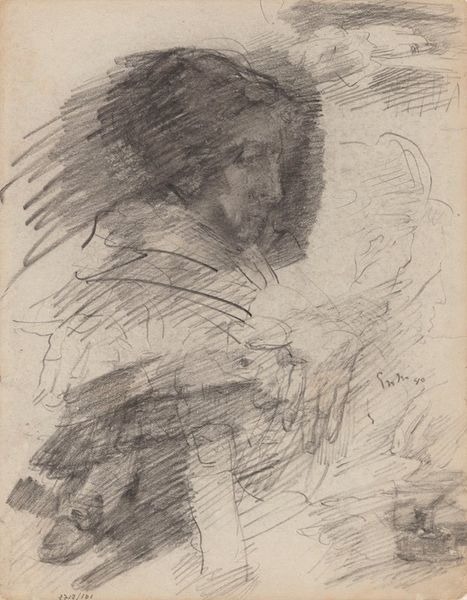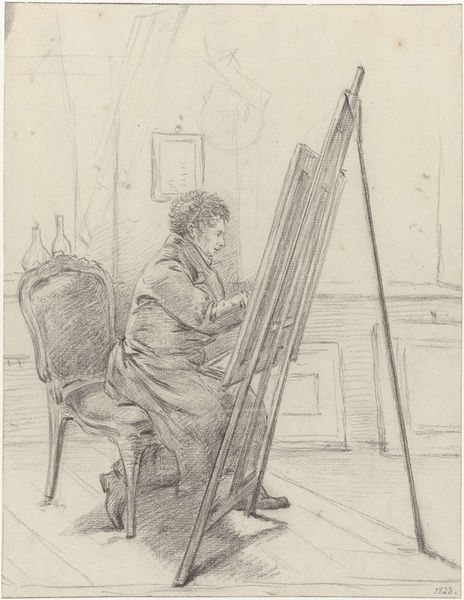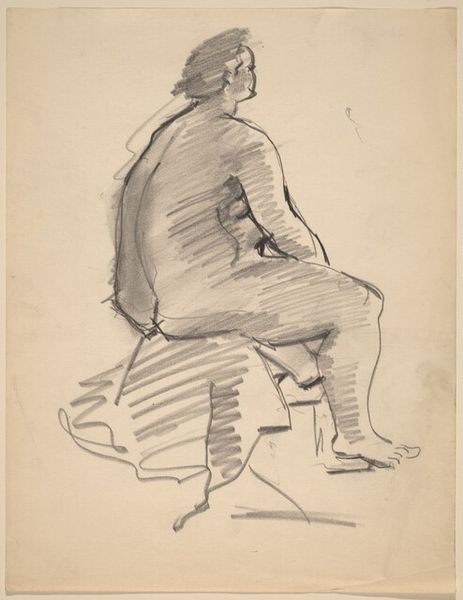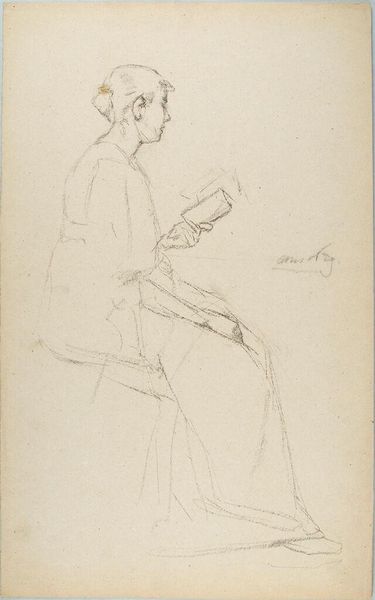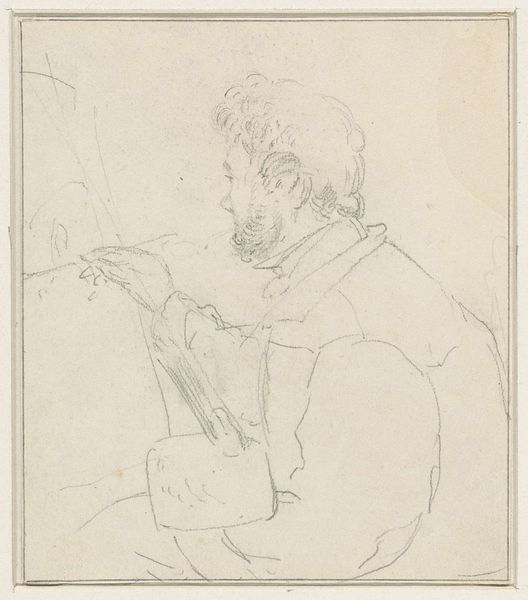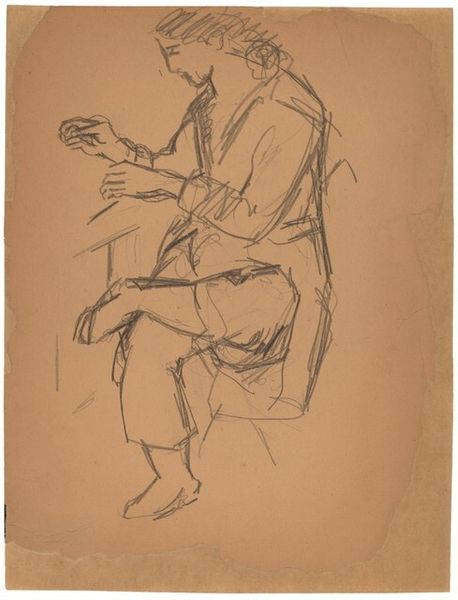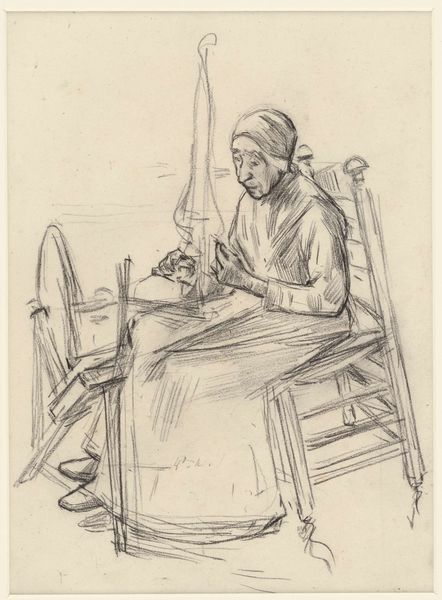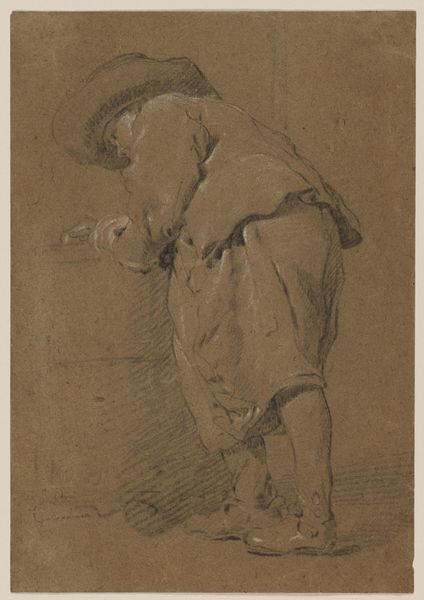
drawing, pencil
#
portrait
#
drawing
#
pencil
#
portrait drawing
#
realism
Dimensions: overall (approximate): 38.9 x 26.2 cm (15 5/16 x 10 5/16 in.)
Copyright: National Gallery of Art: CC0 1.0
Curator: Here we have a drawing entitled "Epstein," created by Francis Dodd. It seems to be rendered in pencil. What's your immediate impression? Editor: I find it to be rather brooding. There's a palpable sense of weight to it. Epstein seems deep in thought, maybe even troubled, based on his brow and the way his body is leaning in. It has this contemplative, almost melancholic quality, accentuated by the grayness. Curator: It's interesting you say that, given the subject, Jacob Epstein. He was a very prominent sculptor known for his often controversial public works, especially after World War I. Think about that context as it relates to art being made at that time. It seems the world was searching for answers. Editor: Absolutely, that historical element seeps into it. Looking at his expression more closely, it almost suggests a man grappling with profound questions of humanity in the aftermath of such a terrible event. Are there any iconographic elements specific to Epstein’s image, beyond him just being a sculptor? Does it refer to larger themes of art's role? Curator: Well, Dodd, who produced this portrait, was known as a portrait artist of some stature in his own right during the wars, so the subject matter of fellow artists seems typical in the trajectory of his work. The work itself lacks overt symbols, but the intensity of the gaze suggests something more. We see Epstein’s pensive mood. His profession may be the starting point, yet it suggests an artistic life burdened by what he created as an artist but, perhaps, weighed down by the historical forces around him, too. It also begs the question what role his sculptures had to play in remembering history itself. Editor: And that tension, that duality you speak of—burdened and inspired—it plays out in his posture, the slightly slumped shoulders suggesting the former, while his direct gaze conveys the latter. Curator: Indeed. It reflects a world trying to find its footing again. Even a simple portrait can tell such a powerful story. Editor: Ultimately, it serves as an important reflection on art's relationship to public memory and history, something so profoundly resonant today. It goes beyond the individual.
Comments
No comments
Be the first to comment and join the conversation on the ultimate creative platform.
